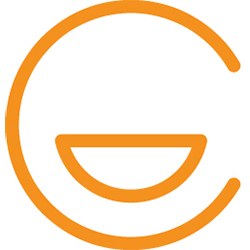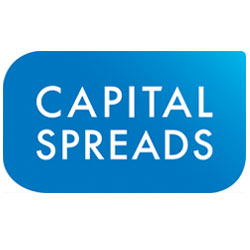Quantum Dots were discovered in 1980 by Alexei Ekimov, and have been playing an ever more important role in tech advances for televisions and solar cells, as well as a host of applications further away from commercialisation. The unique properties of quantum dots allow the photonic emissions to be tuned by the size of the dot and this has meaningful benefits to solar cell efficiency and LCD power consumption, as well as bringing the colour array of LCD/LED into the OLED league potentially at a much lower cost. There are a number of Companies involved in this space, Nanosolar (privately held) – focuses on Quantum Dot CIS Solar Cells, Nanosys & QD Vision (privately held) concentrating on TV displays and LEDs, and Nanoco (LSE:NANO) concentrating on solar with Tokyo Electron and TV displays with other unnamed Asian partners, which announced today its licensing agreement for distributing cadmium free quantum dots for the display market with DOW Chemical.

For Nanoco, this follows on from stake building by Henderson pre-Christmas, an initiation of coverage by Liberum with a TP of 160p on the 16th of Jan and upgrade today to 260p, an upgrade today by Canaccord to 265p and finally the first commercial display exhibited by Sony in conjunction with QD Vision at the start of this year.
Announcement and Take
Nanoco announced today a global licensing agreement whereby DOW Electronic Materials will have exclusive worldwide right to market and manufacture Nanoco’s Quantum dots for use in electronic displays, with Nanoco receiving an undisclosed royalty payment. DOW Electronic Material will build a facility in Asia. The capacity has not been disclosed.
It looks like the Runcorn facility will be put on hold and it is not clear whether electronic displays include Diodes alongside the LCD/LED segment.
Quantum Dots – A bit of science
Quantum dots are small crystals that emit light of varying colours depending on the size of the crystal. Generally the smaller the crystal, the harder it is to produce, and the higher the frequency it emits. So a small crystal will emit blue light and a larger one red light.
Applications 1 – Solar
The major technological battle in solar has been between the flexible, low weight and efficiency thin Film vs the cumbersome, higher efficiency Crystalline silicon. In 2008 Thin Film was all the rage with sky high Polysilicon prices and bets were on Thin Film gradually taking market share. Firstsolar had a cost per Watt that was 50% below polysilicon competitors and an efficiency of c.10%, compared to crystalline silicon technologies at roughly 15%. Now, the cost per Watt for Firstsolar sits at around $0.67 and the average efficiency of its modules at around 12.7% compared to crystalline silicon technology at approximately $0.75 and an efficiency of 16-17%.
The relative catch up of crystalline silicon in terms of cost has been mainly due to the falling polysilicon price coupled with the increasing economies of scale. Breakthroughs, in terms of efficiency, have been made with anti-reflective layers (stopping light bouncing of the cell surface – analogous to a cats-eye), selective doping, and thinner printing of the silver conductors on the cell surface or burying them altogether. However the theoretical limit to single junction solar cells/modules is constrained by the Schockley-Quiesser limit to 33%.
The Schockley-Queisser limit comes about due to the solar spectrum, i.e. the light emitted from the sun and the bandgap of the material being used to convert it to electricity. With our sun, the optimum bandgap is about 1.4eV, and silicon is chosen due to its close approximation to that, 1.1eV, also taking into account its properties as a conductor. The theoretical limit with single junction crystalline silicon is about 29% as the bandgap doesn’t match the optimum point due to the trade off for better conductivity and less electron hole recombination. Simply put, in standard solar cells, a high energy photon comes in 2eV and kicks off an electron, leaving the other 0.9eV as heat and so limiting the efficiency.
There are a few methods to counteract this, such as multi-junction cells. They (mostly GaAs) provide band gaps across at multiple points across the spectrum to maximise the theoretical efficiency. Essentially they vertically stack different materials with different bandgaps to capture more of the light. An infinitely layered multi-junction cell has a theoretical limit of 86%. At the moment these cells are only used in satellites because of their high cost due to the complex process of depositing multiple layers.
There is another way of breaching the single junction limit of 33% by using Quantum Dots, as they can emit multiple electrons from a single photon. As such the theoretical efficiency can be increased to 42% for single junction solar modules. Nanosolar, a Californian based Google funded venture, has reached a laboratory efficiency of 17.1% with its CIGS (Copper Indium Gallium Di-Selenide) product, but bear in mind laboratory efficiencies take 5 plus years to translate 50% of their advances into commercial production.
Application 2: TV’s
The turmoil that has been the history of televisions is a story of ever more violent upheavals and rapid technological shifts. Cathode rays have been made obsolete by plasma’s and LCD’s, and now flexible OLED’s have set the challenge to hybrid LED/LCD’s.
LCD’s provided lower costs, thinner screens and better colours compared to CRT’s, and OLED’S did the same to LCD’s whilst eliminating the backlight . Finally hybrid LCD/LED TV’s, either backlit or side-lit with their respective advantages, incorporated the low energy consumption by using LED’s whilst maintaining the filtering element of the LCD crystal displays. The threat of OLED’s and its better colour rendering has reared its head, and is being sold as a premium due to its cost but isn’t gaining market share.
The race has all been about slimmer, sexier and more extras – like a combination catwalk and page 3 model. LCD’s and their hybrid LED/LCD’s have an estimated 70% market share in 2012 from less than 5% in 2005. OLEDS have started to make an appearance but are priced at a significant premium – for example the 55inch Samsung OLED sells for just over £6000 compared to LCD’s and their variants at £1000-1500. Even though there is a distinctive price premium, OLED’s are easily degraded by water and continued use – specifically with the blue colour OLED (losing 50% of effectiveness over five years at eight hrs usage per day). Quantum Dots also have their problems, although not insurmountable, by being oxidised readily in air.
The plan for OLED’S is to follow the cost curve lower, but yet again the disruptive element of quantum dots could change the game. The concept was displayed earlier this month by Sony, where a gallium nitride blue LED light passes through a layer of Quantum dots and then out via the LCD display. The advantages over the traditional side-lit or backlit white LED being a colour scale comparable with OLED’s, power savings and potential cost savings – so an OLED quality TV that doesn’t break the bank. Another advantage of the quantum dot model is that old LCD fabs can be modified to include it instead of a dramatic overhaul with specialised deposition equipment as in the case of OLED’s. Clearly this is where DOW is positioning itself.
Application 3: LED’s
LED’s are gaining market share across the world in the traditional lighting segment as well as being an integral part of the LCD/LED hybrid display. At present white colour light is made in two ways, either through phosphorous doped blue LED’s that stretch out light spectrum to give the appearance of white light, or by combining Red, Green and Blue diodes. The problem with the RGB combination is that it costs a lot – 3 diodes instead of one that is modified, whilst phosphor doping leaves a large spike in the blue end of the visible spectrum and gives an unnatural hue to end viewing.
You’ve guessed it, Quantum dots can be married with the blue gallium nitride diodes, to give off truer colour. Nanosys simply has a Quantum dot lens that covers the blue light and gives off more natural light.
With TV’s however, the plan is to incorporate the Quantum Dots as a film across the back of the TV. Most broker notes haven’t highlighted this, but surely it would be better to just have Quantum Dot enhanced LED’s in the background. This could have effects on sales/volumes estimated so far.
Nanoco
The Company is Manchester based spin-off of its home city’s university, alongside Imperial College. The Market cap is nearing £300m with 2011 revenues of £2.6m, so is this premium justified or is the Company too hot to touch right now – are we back in the days of Fuel Cell Companies, such as ITM in 2006-7.
Financials
The problem is placing an estimate on revenues. At present the Company sells most of its product as milestone payments for about £2m per Kg. Most brokers are estimating prices in the region of £200k-50k per Kg declining through to 2017, with a volume ramp increased from 100-250kg in 2014 through to 12,000kg – or FY ‘17 revenues of £150m after taking into account an estimated 25% royalty payment. As for earnings, a pie in the sky guess of 30%, meaning a forward ’17 multiple of 6.7.
So what does this mean for market share of display televisions. According to the Company an estimate of 0.7g of quantum dots per 60 inch TV can be used – so a 40% market penetration in 2018 would require 12,000kg – which is what Dow Chemicals two largest clients, LG and Samsung, roughly hold in the high end TV market. Definitely plausible, but a lot of assumptions on price, royalty and production.
Let’s look at it another way – with yet another load of estimates. What about the replacement costs for what’s out there already. Estimating the LED cost for a 40inch TV (about 750 LEDs) and using low range costs off various websites, the total white SMD (surface mounted design) LED costs would be roughly $23. With blue LEDs the cost would be $8 and the quantum dots $28 – assuming £50,000 per Kg and not including assembly. So a bit of an extra cost but nothing compared to the CAPEX required for OLED’s and yet the same visual result– and it’s not clear whether this 0.7g estimate is for entire films of QD’s or for coated or “lensed” diode’s. Just consider this a thought experiment before getting lambasted on the bulletin boards.
Nanoco’s USP for mitigating risks
There are three major linked risks to Nanoco: Competition, scaling production and the Cadmium free saga.
Nanoco has produced Cadmium free Quantum Dots by complying with the ROHS (Restriction of Hazardous Materials Directive, which have given it a head start with regards to competitors QD Vision and Nanosys who don’t. Samsung have abandoned their Cadmium quantum dot campaign for this reason.
The issue with scaling a nascent product could also restrict market take up. Nanoco says it’s molecular seeding process is more appropriate than its competitors dual injection, as temperature control is more easily maintained – but you have to take their word for that, and DOW has. So it looks like Nanoco has won the first round.
Industry News and potential M&A
The solar space has picked up yet again with a whole new wave of MA. Q-cells and its Hanergy Hanwha sale, Hanergy and Miasole and its stake in Apollo solar, and finally Oerlikon buyout by Tokyo Electron, who have the agreement for a solar ink with Nanoco. But Nanoco’s ink has only reached efficiencies of 8% in respect to Nanosolar’s NREL approved 17%. So with solar it’s probably long way off, leaving the lighting and the screen display market as the most immediately cash generative.
You have to ask the question will it be taken out? Private equity has both of its major competitors. Diode companies, such as Cree, Epistar and Osram, have a lot to lose by not being a first mover in this market, but they’re electronics Companies not Chemical Companies. Furthermore, Dow has already taken the bait saying “we want this product” proving its tastiness to the majors – and could make more moves for further distributorship rights, i.e. to LED makers if the present agreement doesn’t include it.
Conclusion
A risky nascent tech that has clearly huge market potential: Richly priced but for these reasons. But strategically it is a sitting duck for Chemical Companies, and, most likely for Dow to consolidate, although this could be heavily premature. However, the news of DOWS involvement is a strong catalyst for earlier revenue generation as well as being a confirmation of the technologies scalability and potential, although the lack of clarity on the specifics of the deal are somewhat irksome. Bear in mind the potential for scale up delays on the downside and lack of revenue visibility, and on the upside, announcements for the LED market primarily as well as the solar space. Looks like a buy, hold and buy on dips if or as enthusiasm wanes – but this is a highly speculative stock with uncertainties galore, so something for the growth section of your portfolio that you can afford to lose – maybe prudent to wait for a pull back before entry, but then you might miss out.


 Hot Features
Hot Features














I believe one company you left off your list has the solutions to many of the issues regaurding mass productionn and scale of economy.They are a publically listed company QTMM and were recently covered by Frost and Sullivan recieving the “2012 North American Enabling Technology Award for Advanced Quantum Dot Manufacturing”.
Quantum Materials Corp
First-Tetrapods Synthesis with over 92%> Full Shape
First-Tetrapods with over 92% Uniformity of Size
First-Tetrapods w/precise control of arm width & length
First-Tetrapods Eco-Friendly Green Synthesis
First-Tetrapods Continuous Flow Chemistry Process
First-Tetrapods Mass Production by Continuous Flow
Wide Variety of Group II-VI Tetrapods; Cd or Cd-Free
Dec. 2012: New Tetrapod with 80%> Quantum Yield
Best Tetrapod for Commercializing New Applications
Best Company for Nanotech Joint Venture Partnering
Proprietary QD Printed Electronics Technologies
Precision printed lithography, gravure, inkjet printing
Roll to Roll QD Printing at high speed on flexible substrates
QMC is the parent company for Solterra Renewable Technologies who are developing 3rd generation solar using quantum dots..
Solterra Renewable Technologies
Solterra Renewable Technologies developing Non-REE Flexible Thin-Film
Photovoltaic Tetrapod Quantum Dot Solar Plants. Our objective is to become
the first bulk manufacture of high quality tetrapod quantum dots and the
first solar cell manufacturer to be able to offer a solar electricity solution that
competes on a non-subsidized basis with the price of retail electricity in key
markets in North America, Europe, the Middle East and Asia.